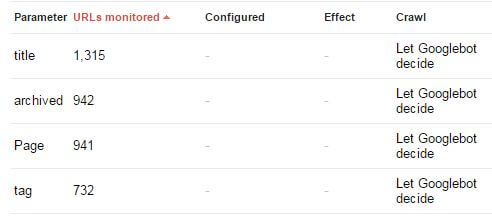5 SEO Problems Plaguing E-Commerce Websites
Columnist Erin Everhart addresses some of the unique challenges facing e-commerce sites when it comes to search engine optimization.
Search engine optimization (SEO) is challenging, but SEO for large e-commerce websites is a different kind of beast.
Not only are you dealing product inventory and adding new pages constantly, but you’re also not the only one responsible for the website.
The larger the site, the more hands you have on it — and most of those hands will have little to no SEO knowledge. This means they won’t understand how their changes could impact organic search performance.
Even the small changes can have a big impact. Large sites are fighting tooth and nail for visibility on search engine results pages, and the minor things that help SEO — adding in ALT tags, proper structuring of your header tags, etc. — could be the difference between a No. 2 and a No. 1 ranking, which could easily be worth an extra $100,000 in revenue.
Let’s take a look at some common SEO problems plaguing e-commerce websites and how we can fix them.
Poor Product Descriptions
Product descriptions are the bane of every e-commerce site’s existence. It’s time-consuming to create unique descriptions for each item you sell, but this is necessary if you expect your products to rank.
Users also rely on these descriptions before purchasing said product. A product image alone isn’t going to cut it for getting your users to buy a product, and search engines can’t see that image anyway.
The problem: Lots of things could be causing problems with your product descriptions. For example:
- You’re using the manufacturer’s product description (which is given to every retailer who sells that product).
- There is duplicate content where you have different versions of the same product.
- Your product pages have no content or very thin content.
The solution: There’s no easy way to say this, folks. Write unique product descriptions. Yes, that’s right — for every single product you carry.
Unoptimized Product Pages
SEO is largely a top-of-funnel marketing channel. Users are still in the research phase of their purchasing cycle and tend to search as such, relying on more broad keywords (such as “TVs” or even “LED TVs”) to help them determine what specific product they want.
That means most SEOs want to drive traffic to the category or product listing pages rather than individual product pages.
While the broader terms will drive most of your traffic, you can’t forget about the users who already know what specific product they want — for example, “Samsung 55in LED TV” or even just the model number, “FH6030.”
The problem: Not only are you cutting off your traffic potential by neglecting these long-tail keywords, but you’re missing out on what could likely be an immediate conversion point. What makes an unoptimized product page:
- No product reviews
- Poor keyword targeting
- Missing image ALT tags
- Thin content
The solution: Thin content can easily be remedied by including product reviews, unique product descriptions, and detailed product specifications.
Product reviews are key here — not only do they better optimize your product pages, they also help visitors to make a purchase decision. Make sure your product reviews are SEO-friendly and can be indexed.
With your keyword targeting, make sure you frame your product pages around the specific product your users could be searching for. This means including brand name, model number, color (if applicable) and size (if applicable) in your product names.
Placement of each of these attributes matter. There’s a big search difference between “Samsung 55 inch LED TV” and “55 inch Samsung LED TV.”
Improper Internal Linking
With so many people making changes, large e-commerce websites often have inconsistent internal linking. Copywriters, designers, project managers and social media marketers all will be grabbing site links to use in their respective projects, and they’re likely not pulling the same ones (or even the right ones).
The problem: Instead of going through the main navigation to pull a product listing link, they’ll just search for that product via internal search and pull that link, which is likely noindexed and nofollowed.
Not only are you not getting value from that internal search page, but you’re giving search engines mixed signals on the best URLs to rank.
The solution: Educate your respective teams on the importance of consistent linking and explain why it’s necessary to link to the URL that we want to rank in search engines (most of the time, the main navigation link).
If your canonical tags are set up properly, have them pull the canonical rather than the front-facing link.
Not Managing Your URL Parameters
URL cleanliness is an overarching problem with e-commerce sites, as most have dynamically generated URLs rather than (or in addition to) static, keyword-relevant URLs.
While SEOs try to limit the URL parameters in their strings, it’s a necessary evil on large e-commerce sites. Parameters will exist, but you have to manage them correctly.
The problem: Relying solely on Google Webmaster Tools Google Search Console to configure your URL parameters, which could create handfuls of duplicate content without you even realizing it.
The solution: Google has come a long way in reading and parsing URL information, and they do it get it right sometimes, but the fact of the matter is that you know your URL structure better than a bot.
Make sure you’re configuring these parameters correctly by telling Google which parameters they need to crawl and which to ignore.
No SEO & SEM Collaboration
SEO and SEM teams just aren’t playing nicely. This isn’t just an e-commerce problem; it’s happening everywhere.
However, e-commerce websites have a lot more money on the line to lose when these two marketing channels are going at each other with battle axes rather than sharing their data and collaborating.
The problem: There are two big things happening when SEO and PPC don’t talk to each other.
- You’re missing out on a huge remarketing opportunity.
- You’re probably losing money from bidding on the wrong terms.
The solution: Simply put, make an effort to better integrate your SEO and SEM teams. SEO teams can rely on SEM teams for the keyword data that Google secure search took away. SEM teams can better spend their budgets by knowing what research-based keywords we’re already organically ranking for that have a low PPC conversion rate.
If you see you’re losing money on a particular keyword because it’s just not converting, stop bidding on that term and funnel efforts into organic search.
This by no means is an extensive list — you’ve still got duplicate content, slow crawl rate, and local listing management issues to deal with — but this should give you a good start on getting your site optimized.
What are some of the other problems that e-commerce websites are prone to, and how can we fix them?
Opinions expressed in this article are those of the guest author and not necessarily Search Engine Land. Staff authors are listed here.
Related stories
New on Search Engine Land


